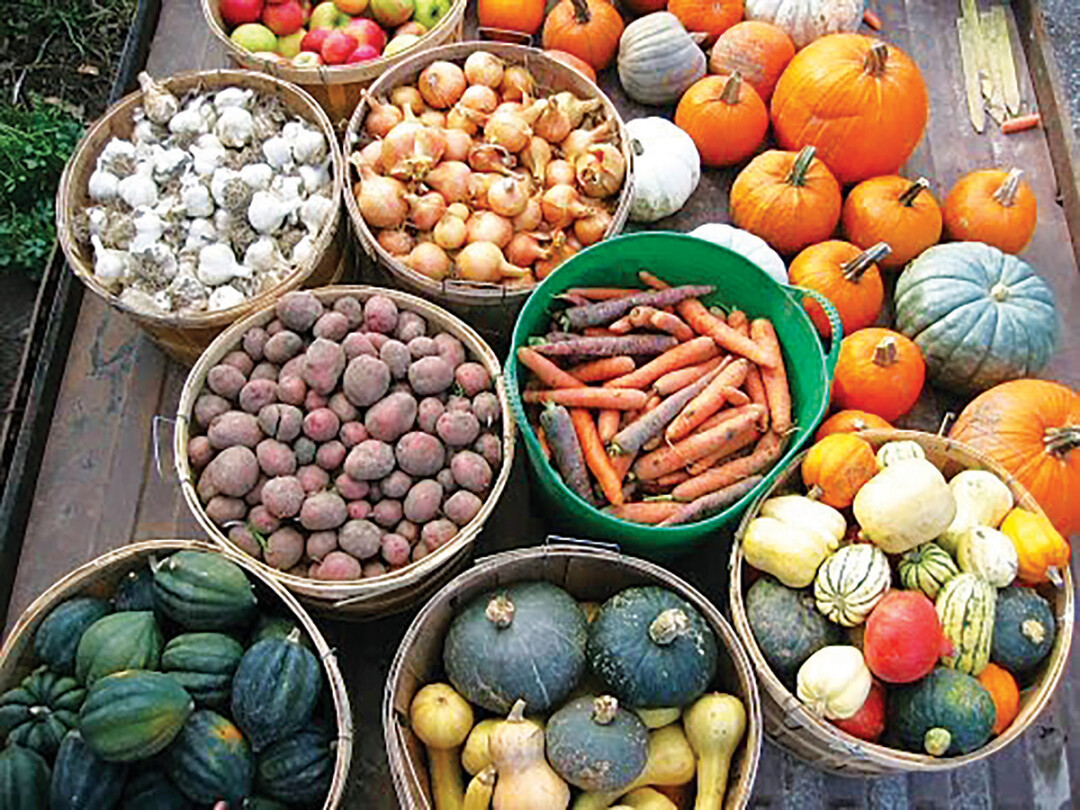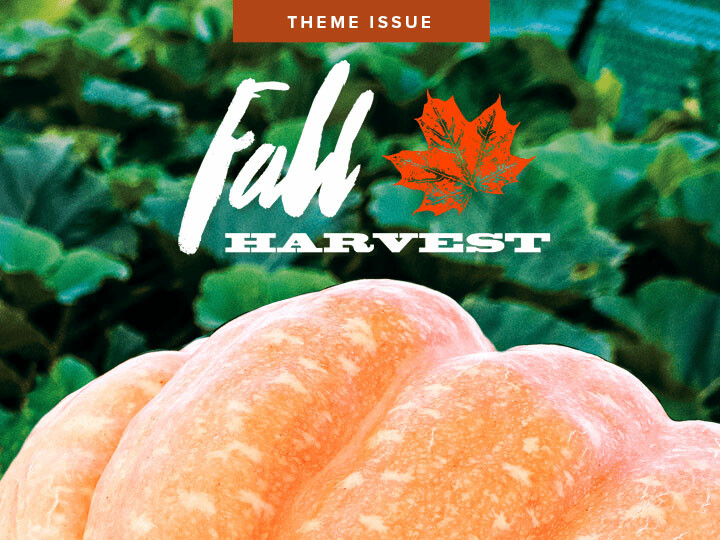Winter Storage for Garden Vegetables
creative ways to keep your harvest fresh for months

One of the joys of summer is walking through the garden in late afternoon and planning the evening meal around whichever produce is ready to pick. With September’s shorter daylight and cooling temperatures, we know the days of harvesting fresh tomatoes and cucumbers off the vine will not last forever, but with a little planning now, we will still be able to walk, if not into the garden, then into the cellar or storage room where we can select still-living foods for our winter meals.
Not all vegetables need the same storage conditions. Each crop has its own temperature and humidity requirements. Knowing these needs can mean the difference between peak quality veggies or shriveled roots and moldy squash in December or January.
Traditionally, vegetables for winter storage were kept in one of two places: the root cellar or the attic. Even if we live in a house with neither of these, they can serve as good examples for thinking about storage conditions. I also add a third possibility: protected storage right in the garden.
IN THE GROUND
The easiest way to keep some crops producing through November or December is to keep them right in the garden, adding a bit of insulating protection as the weather cools. Cold-hardy lettuce, spinach, kale, mustards, and Asian greens can tolerate below-freezing temperature to at least 25 degrees, and some to as low as the low teens, depending on the variety. Harvesting should be done when temps are above freezing and the plants have thawed.
Insulating covers can be a single or double layer of row cover (there are a number of brands, two common ones are Remay and Agribon), a cold frame made from straw bales with an old window or a piece of clear plastic over the top, or even just an old blanket or tarp thrown over the patch on cold nights. (If you have a tightly built cold frame, you'll need to open it at least a crack on warm or sunny days to avoid overheating.)
Root crops can also be left in the ground, covered with straw or other insulation, and dug as needed for as long as you can keep the soil from freezing solid. One caution with this strategy: Rodents are very good at finding food sources, and appreciate easy-to-dig veggies at least as much as you do!
ROOT CELLARS
Root cellars are cold, humid, ideal places for storing root crops such as carrots, turnips, beets, daikon radishes, celeriac, potatoes, and parsnips. Cabbage and Napa cabbage also do well in these conditions. To keep these plants fresh, we need to duplicate underground winter conditions with temperatures that are close to (but very slightly above) freezing, darkness, and high humidity. Light or warmth will signal that spring is here and it’s time to bolt and flower; dry conditions will cause produce to shrivel.
Root crops (with the exception of potatoes) are best stored in layers with damp sand or sawdust between them, so that if one spoils it will not spread to neighboring roots. Sawdust is lighter and easier on sinks and drains. I also know some folks who simply store root crops in large plastic bags in their cellar, and say they haven’t experienced spoilage problems.
No cellar? Any location that meets the “cold, dark, and humid” requirements can be used. One method is to use a picnic cooler/ice chest: Once nighttime temperatures are low enough (below 40 degrees) you can put your vegetables in the cooler and place it in a shaded location. Leave the cover open at night to allow cold air in, and close it in the daytime to keep it cold. A thermometer inside will help you monitor conditions. As it gets colder, you may need to reverse the process to prevent freezing at night, or move the cooler into a garage or unheated entryway.
ATTICS
The attic provides warmer (but not too warm) temperatures, good air circulation, and dry conditions. Onions, garlic, and winter squash keep best at around 50 degrees. Sweet potatoes keep at around 60 degrees.
Most houses have at least one dry space with these temperatures: an entryway or garage, a cool bedroom, or an unheated basement. Store these crops in shallow containers to allow for air circulation; squash should be spread one layer deep and with a little space between fruits.
All stored produce should be checked and sorted regularly, with “use first” veggies brought to the kitchen. If there are too many of these to eat right away, they can be dehydrated, fermented, canned, or frozen for later use.
Kathleen Plunkett-Black is a lifelong gardener and has grown all the vegetables to feed her family year-round for many years. She grows and sells vegetable seeds for many of the varieties she depends on to do so. Plum Creek Seeds seed packets can be purchased during the planting season at Menomonie Market Food Co-op in Menomonie, or through her mail order catalog. (To be added to the mailing list, send $1 to Plum Creek Seeds, N3528 County Road D, Arkansaw, WI 54721.)

